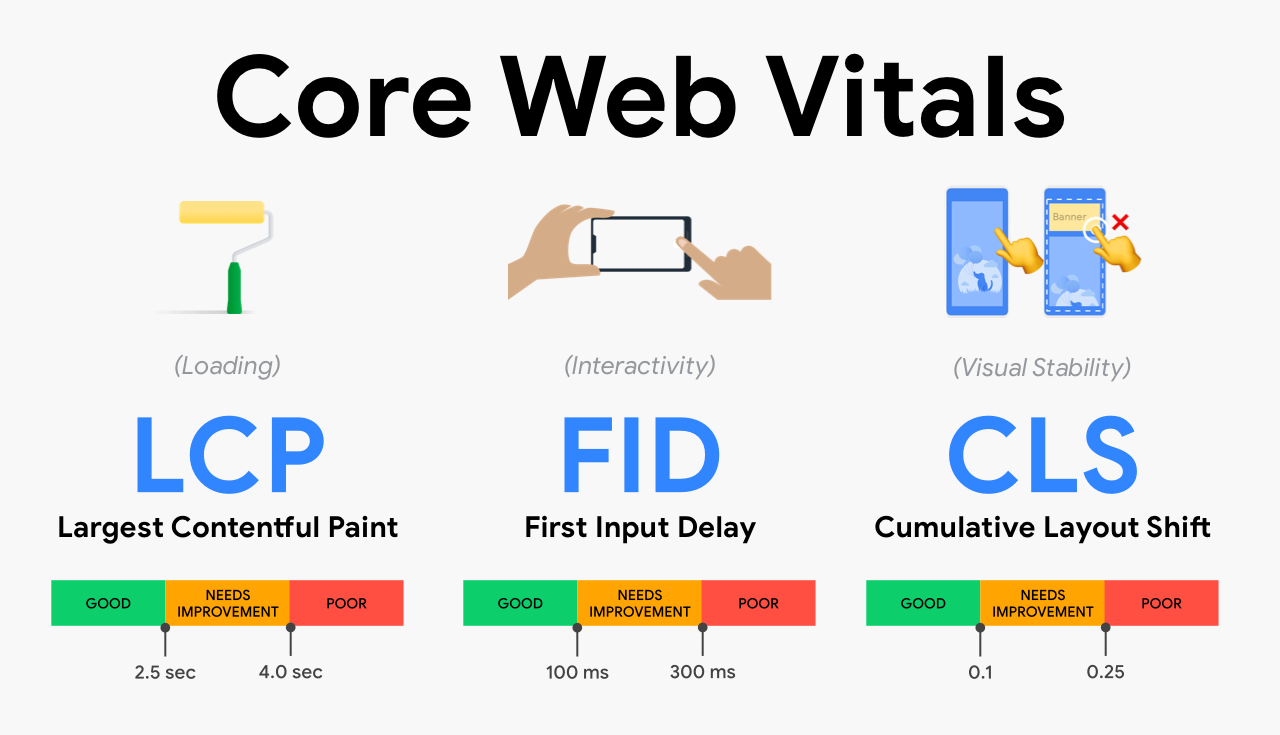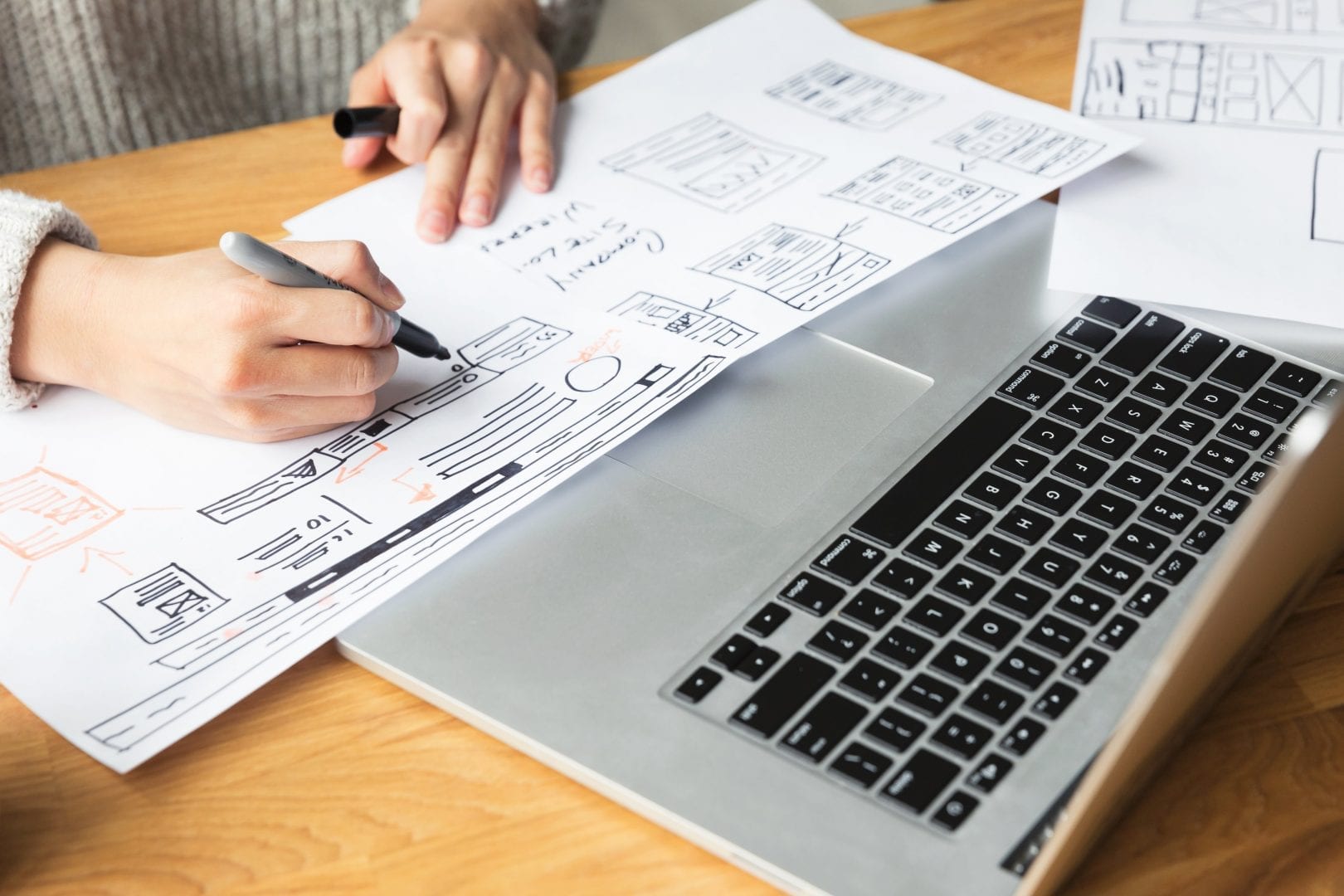How to extend your website’s lifespan
A website should be the kind of marketing tool that a company can constantly customize to suit its changing needs without too much effort. Ideally, a company would rarely have to invest in its website, and the site would be built from the start in a way that it can easily be further developed. A website renewal may be necessary if content producers have to struggle, for example, with an outdated or technically unstable site. However, the truth is that most B2B websites are completely rebuilt every 2-5 years simply because customizing them is difficult and time-consuming. Renewal projects often cost tens of thousands of euros.
Companies renewing their site also tend to focus too much on what the site looks like at the time of launch. Instead, they should consider how the site’s performance is going to be measured and how easy it will be to change the site in the future – because the organization’s needs will always change. A site can be very long-lasting if it is built to adapt to business changes and it is always kept up to date. In this article, we’ll give you some tips on how to increase the lifespan of your website.
▸ Research the needs of your users
▸ Actively create and optimize content
▸ Invest in search engine optimization
▸ Keep your site technically stable and secure
▸ Improve accessibility
▸ Invest in site customizability and scalability
Research the needs of your users
Does your site communicate your business strategy in the right way and does it provide users with the content they were looking for? If a company’s business strategy changes, the content strategy needs to be updated. It’s important to find a perspective and tone of voice that feels like your own and is easy to put into practice. However, when renewing the content strategy, it’s also important to look at the broader development of your industry and research how your competitors talk about their products and services.
Utilizing data efficiently is essential in building a long-lasting website, as it provides accurate information on the profitability of your marketing efforts and the behavior of your customers. When data serves as the basis for decision-making, it’s easier to create more personalized user experiences and more effective online strategies. If you don’t identify your target audiences, know what your visitors are searching for, or don’t know how users are behaving on your site, you will have a hard time creating compelling content. Keyword research is a good first step: it allows you to find out which search terms potential customers are using when looking for products or services related to your business. So, when you are getting started on content production, base your decisions on data instead of guessing.
Actively create and optimize content
When you’ve identified your target audiences and their needs, it’s important to produce quality content for those audiences. When you want your site to stay up-to-date, relevant and for it to last long, it’s essential to both optimize old content as well as create new. Writing blog posts, articles and other content regularly is also important for search engine visibility. A good pace for publishing content always depends on the site and its purpose. The most important thing, however, is to create content that is interesting and valuable to the visitor. Content production also shouldn’t take up all of the marketing resources.
Producing search engine optimized text is very important, but it’s worth remembering that content that genuinely helps the user is also valuable for search engine visibility. Sometimes you see text written for search engines only with as many relevant keywords squeezed in there as possible. If users feel like they are not getting an answer to their question, they will probably leave. While a good content strategy depends on your company’s goals, write content for real people. When you help your users learn something valuable, they will remember you.
The value of older content can also increase over time. If people return to your articles from years ago over and over again, it is a sign that the content is genuinely useful. When you write new articles, link to the old ones and vice versa. This way, old content does not override new content but remains relevant. When you are updating an old article, you are also telling Google that you have something new to say about the topic, and that article does not fall out of the search results.
Invest in search engine optimization
When your site is found on Google with the right keywords, it will attract more visitors and stay relevant. As mentioned in the previous section, generating and optimizing quality content will go a long way in improving your search engine visibility. But don’t forget the two other areas of search engine optimization, technical optimization and links, as both contribute to how high you rank in Google’s search results.
Google’s algorithm has changed recently, and search engine visibility is now affected by some new factors. These are Google’s Core Web Vitals, user experience metrics that took effect in May 2021 and apply to every website. The new metrics are LCP (Largest Contentful Paint), FID (First Input Delay), and CLS (Cumulative Layout Shift). These may sound complex, but they are really quite simple. Fortunately, Google has given detailed instructions for redesigning websites regarding Core Web Vitals.

Keep your site technically stable and secure
Your site cannot stay stable or last very long if it has security issues. The site’s content management system and downloaded plugins should always be kept up to date. One of the advantages of open source is that it is easy to assess the reliability of plugins. Although security vulnerabilities can be found in all systems, keeping everything up to date can significantly reduce risks. This is achieved by a digital partner who can act quickly if vulnerabilities are detected in any of the systems.
You should start thinking of your website’s lifecycle before the site project even starts by giving attention to the architecture and the choices of technology. WordPress provides a good foundation for a long-lasting website, because updates come frequently and improve the platform one piece at a time. This means that installing updates rarely breaks the site or leads to high development costs.
In technical implementation, it’s good to consider the following:
- It is a good idea to use the technologies, plugins, and components that are in common use in the industry. For example, there might be a new and great plugin for search engine optimization on the market, but this does not mean it is worth getting. A familiar and safe option is more secure in the long run.
- Customizations should be minimized. Each customization increases the maintenance debt of the service, as it must be taken into account in further development. Think of how you can best take advantage of the platform’s built-in features.
- In connection with the previous points, minimizing code will in general facilitate all the work in the future. The fewer plugins and customized development, the more agile the maintenance will be later on. Obviously, site projects always include some customization, but it is good to do it in moderation when designing the site. This principle also improves data security, because less code always means less potential for vulnerabilities!
- Good documentation helps in further development. The personnel always changes and the industry moves forward, so it is important that all technical solutions are carefully documented.
- Be prepared to repair maintenance debt. Your site starts to accumulate so-called technical debt immediately after launch. WordPress, plugins, and software are updated. At some point, there will inevitably be a situation where the site needs to be technically modernized, without necessarily achieving any visible benefits. However, if the site is well designed from the start, this process will be much more cost-effective than redesigning the whole site.
Improve accessibility
Accessibility means user-friendliness, like the smooth operation of the user interface and easy-to-understand content. If the user has technical challenges on your site or difficulties reading your content, you won’t be able to reach your users and convert them into customers effectively.
Even if your site is not covered by WCAG guidelines A or AA level criteria, you should still pay close attention to accessibility when designing your site. People spend more time on accessible sites, which in turn improves the ranking of the sites in search results. Accessibility requirements change quite frequently, and the development is worth following if you don’t want to fall behind. Find out more about accessibility guidelines in Finland.
Invest in site customizability and scalability
A complete renewal of the site may be necessary if there are problems such as complex structure and information hierarchy, outdated coding practices, an unstable technical platform, or worn-out visuals that are no longer in line with the company’s brand. When an extensive renewal is needed, it is always smart to create a platform that will allow building new features in the future.
A new, fresh website does not yet guarantee that the site will adapt to the needs of users. As we emphasized before, effective online business is created by further developing and optimizing services in the long term. An easily updateable site is the basic prerequisite for successful marketing.
Messukeskus is a good example of a site that always scales to new organizational needs thanks to how it’s built. Messukeskus has been using the same site since 2015 to create and manage hundreds of events every year. Our common view at the start of the project was that the website should be able to be further developed in the long term – without having to be completely redesigned. Because the site template is completely managed by Messukeskus itself, making changes is fast and cost-effective. The platform ensures that each event page can have its own identity while keeping the visual look consistent throughout the site.

Have a question? Contact us and we will help!












